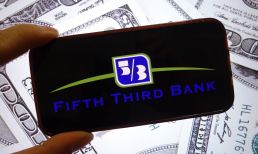When a customer walks into a physical location to transact, a whole host of behavioral data becomes available to whatever entity is serving them.
Are they acting interested, engaged and prepared? Or do they appear to be casing the joint and attempting to memorize the location of the security cameras? That behavioral data can then be used to inform how the customer is treated and what kind of interaction they are going to be offered.
But in the digital space, that kind of behavioral data has been largely unavailable, Neuro-ID CEO Jack Alton told Karen Webster. And perhaps even worse, merchants, financial services providers, insurance firms and others don’t really know there is behavioral data to be looked at for insight. It’s simply been taken for granted that when it comes to consumer behavior online, large segments of it are going to be invisible.
But Neuro-ID, he said, was created to counter that notion and find ways to surface that suspicious behavior for clients when interactions happen online.
“The keyboard, the mouse, the touch screen, all of those devices allow us to essentially translate what’s missing today,” Alton said. “That’s why we call them human analytics. The piece that’s been missing when we try to build these beautiful applications is the ability to engage and connect with that customer on the other side. When we offer Behavior-as-a-Service, we tell people if you have behavioral data today. What we do is translate that into actionable insight for you.”
And when their clients see it, he said, they are amazed — not just at what they learn, but about all the things they didn’t know that they didn’t know before. And all of this is visible, he said, through the installation of a little piece of JavaScript built to observe and understand human “digital body language.” Using those cues builds a consumer experience that is both more secure and frictionless end-to-end.
Advertisement: Scroll to Continue
Fighting Back The Fraudsters
Although an understanding of consumer digital body language is useful widely to an organization’s interaction with its customer base, the place Neuro-ID tends to start when pitching the “Behavior-as-a-Service” offering is to the security and risk department because the most straightforward application of this technology is fighting off fraud.
Based on behavioral clues that the solution is capable of picking out, he said, fraudsters tend to stand out because they simply aren’t acting right. A customer that is moving confidently and purposefully through a journey behaves differently. They move through the data faster, they don’t tend to make a lot of errors when filling in their personal data, and their physical use of their technology is on the whole more confident.
“Step number one is, let me see first- and third-party fraud through the behaviors of my applicants that I can’t see today,” Alton said. “And what we find is there is very low-hanging fruit here. We literally install our JavaScript, and within a week we can come back to them with their traffic segmented basically into risky behavior versus confident behavior. This allows them to start seeing the fraud.”
And just as important, perhaps, the system can also tell the real risky behavior from the false positives. In one instance, he said, while working with a lending platform, they noticed one of the steps in the application process had a rather long lag time — something that in other contexts was an indicator that fraud is taking place. But, as it turned out, not this context.
“The clients of this lender tended to really look at their income from an hourly perspective, and so they were seeing a lot of drop-off,” Alton said. “They were seeing a long time being spent on this seemingly simple field asking for their income. And if they didn’t have our technology, they may have identified that as people that were trying to defraud them or people that didn’t want to answer the question, when in fact the delay was that they were trying to convert their hourly income into an annual number.”
From there, he said, not only were they able to not misidentify good customers as bad ones, but they were also able to amend that part of the process to offer a simple conversion tip for users. And that, he said, is what tends to happen with the Behavior-as-a-Service offering; it can be used quite effectively to fight fraud, but it can also be used for so much more.
Creating A Path To More Conversions
When you look at customer conversion figures online, Alton told Webster, the numbers aren’t terribly impressive, to put it mildly. Go across verticals — banking, insurance, retail, service — and conversion rates remain stubbornly in the single digits percentage wise, despite the vast amounts of time and treasure spent trying to increase them.
What a better look at behavior can do, he said, is actually offer the information the merchant needs to see where their process is actually falling down. Is there a friction point like an onerous conversion driving customers away? Is there a requirement that makes the customer unhappy during the onboarding process? And most critically, once one is confident they are actually dealing with a trusted customer, is there a way to better fast-track this process to get the MVPs across the finish line more quickly and smoothly?
“What we’re trying to do is just take those in-session interactions and bring them to life, show them the human analytics that are happening,” Alton said. “What is my customer trying to tell me, or on the flip side, where are they trying not to tell me?”



